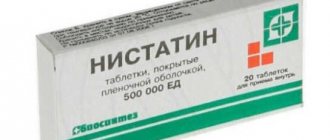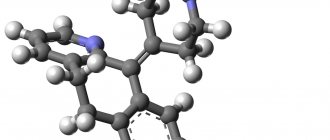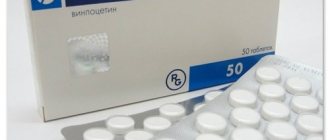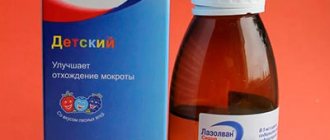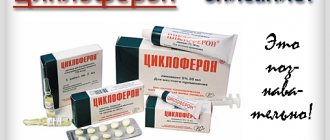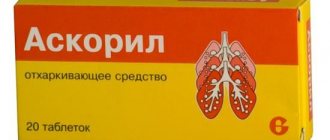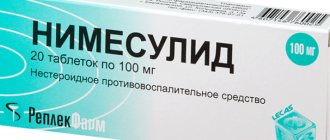805
Erythromycin is the first macrolide antibiotic. The medicine was first obtained by scientists from the American pharmaceutical organization Eli Lilly and Company in 1952. Today, the production of the drug is carried out by European companies and firms from the CIS. The average cost of a Russian antibiotic is 68 rubles. Erythromycin analogues manufactured outside the Russian Federation cost from 300 rubles.
What is the difference between erythromycin ointment and gel and cream?
The ointment contains lanolin and petroleum jelly, so it is very greasy. In this form, the active substance penetrates the skin most quickly and deeply; this form is suitable for dry and atopic skin, and for the treatment of external infectious diseases. Used only for external use, available in aluminum tubes of 10, 15 and 30 grams.
Some manufacturers of medicinal cosmetics have begun to produce creams for the treatment of skin diseases based on erythromycin. This is a more convenient format for the skin: an ointment substance that is too oily can clog the pores on the face and lead to the formation of blackheads and pustules, while curing the underlying disease.
Gel is a less greasy substance well suited for the treatment of rashes (acne, acne vulgaris). Zinc acetate is added to the gel, which increases the healing rate.
The cream is used to treat infectious purulent skin diseases, burns, bedsores, and trophic ulcers. It is most comfortable to apply, not as greasy and sticky as ointment. The difference between a gel and an ointment is that the active substance in it does not penetrate the skin so deeply; this form is usually prescribed for pustular diseases that are not very weeping.
Attention! Do not resort to using erythromycin ointment for external use to treat eye diseases! A special erythromycin ophthalmic ointment is produced for the eyes, which has a convenient narrow spout! Ointment for external use should not be used as a treatment for conjunctivitis and other eye infections! This can lead to complications, corneal burns, and decreased vision.
There are special forms of antibiotics for children .
- Powder for preparing a solution (1 g gram of powder contains 100 mg of erythromycin);
- suppositories with erythromycin (50 and 100 mg);
- Grunamycin syrup;
- suspension (5 ml contains 125 or 250 mg of erythromycin).
What are antibiotics and for what purpose are they used?
In the 50s of the twentieth century, Fleming, Chain and Florey received the Nobel Prize in Medicine and Physiology for the discovery of penicillin. This event became a real revolution in pharmacology, completely revolutionizing the basic approaches to the treatment of infections and significantly increasing the patient’s chances of a complete and rapid recovery.
With the advent of antibacterial drugs, many diseases that caused epidemics that previously devastated entire countries (plague, typhus, cholera) turned from a “death sentence” into a “disease that can be effectively treated” and are now practically non-existent.
That is, a distinctive feature of their action is that they affect only the prokaryotic cell, without damaging the cells of the body. This is due to the fact that there is no target receptor for their action in human tissues.
Reference:Inventor of antibiotics or the story of saving humanity
Antibacterial agents are prescribed for infectious and inflammatory diseases caused by the bacterial etiology of the pathogen or for severe viral infections, in order to suppress the secondary flora.
When choosing adequate antimicrobial therapy, it is necessary to take into account not only the underlying disease and the sensitivity of pathogenic microorganisms, but also the patient’s age, pregnancy, individual intolerance to the components of the drug, concomitant pathologies and taking medications that are not combined with the recommended medication.
Also, it is important to remember that if there is no clinical effect from therapy within 72 hours, the drug is changed, taking into account possible cross-resistance.
For severe infections or for the purpose of empirical therapy with an unspecified pathogen, a combination of different types of antibiotics is recommended, taking into account their compatibility.
Based on their effect on pathogenic microorganisms, they are divided into:
- bacteriostatic - inhibiting the vital activity, growth and reproduction of bacteria;
- Bactericidal antibiotics are substances that completely destroy the pathogen due to irreversible binding to the cellular target.
However, such a division is quite arbitrary, since many antib. may exhibit different activity, depending on the prescribed dosage and duration of use.
If the patient has recently used an antimicrobial agent, re-use should be avoided for at least six months to prevent the emergence of antibiotic-resistant flora.
Most often, resistance is observed due to mutation of the microorganism, accompanied by a modification of the target inside the cells, which is affected by types of antibiotics.
The active substance of the prescribed solution penetrates the bacterial cell, but cannot contact the required target, since the “key-lock” binding principle is violated. Consequently, the mechanism for suppressing the activity or destroying the pathological agent is not activated.
Another effective method of protection against drugs is the synthesis by bacteria of enzymes that destroy the main structures of the antibacterial agent. This type of resistance most often occurs to beta-lactams, due to the production of beta-lactamases by the flora.
Much less common is an increase in resistance due to a decrease in the permeability of the cell membrane, that is, the drug penetrates inside in too small doses to provide a clinically significant effect.
To prevent the development of drug-resistant flora, it is also necessary to take into account the minimum concentration of suppression, which expresses a quantitative assessment of the degree and spectrum of action, as well as the dependence on time and concentration. in blood.
For dose-dependent drugs (aminoglycosides, metronidazole), the effectiveness of action depends on the concentration. in the blood and the focus of the infectious-inflammatory process.
Time-sensitive medications require repeated administrations throughout the day to maintain an effective therapeutic concentration. in the body (all beta-lactams, macrolides).
| Acting mainly on: | Antibacterial products with a wide spectrum of action: | Anti-tuberculosis agents | |
| Gram: | Gram-: | ||
| biosynthetic penicillins and 1st generation cephalosporins; macrolides; lincosamides; preparations Vancomycin®, Lincomycin®. | monobactams; cyclical polypeptides; 3rd generation cephalosporins. | aminoglycosides; chloramphenicol; tetracycline; semi-synthetic extended spectrum penicillins (Ampicillin®); 2nd generation cephalosporins. | Streptomycin®; Rifampicin®; Florimycin®. |
Erythromycin: analogues
| Analogue name | Manufacturer | Release forms | Excipients | Indications for use |
| Grunamycin (syrup) | Germany | granules for suspension | Rice starch, potato starch, sodium carboxymethyl starch, gelatin, polysorbate 80, talc, magnesium stearate. | Children's infections - tonsillitis, laryngitis, sinusitis, otitis media, pneumonia; dermatitis, erysipelas. |
| Ilozon | USA | suspension | Respiratory tract infections, pneumonia, intestinal diseases, primary syphilis. | |
| Erythromycin-LekT | Russia | pills | Potato starch, povidone, polysorbate-80, calcium stearate, cellulose acetate, macrogol, titanium dioxide, castor oil. | Prostatitis, diphtheria, scarlet fever, gonorrhea, otitis, sinusitis, cholecystitis, whooping cough, infected wounds, 2-3 degree burns. |
| Erigexal | Germany | capsules, tablets, granules for suspension | Starch, crospovidone, povidone, talc, magnesium stearate. | Pneumonia, diphtheria, gonorrhea, syphilis, prevention and treatment of rheumatism, listeriosis. |
| Erifluid | France | ointment, solution | Ethyl alcohol, polyoxyethylene glycol, propylene glycol. | Externally, on cleansed areas of the skin for infections of the skin and soft tissues. |
Some people use erythromycin ointment as a cheaper analogue of the expensive “Zinerit” to treat inflammation on the face. To make the inflammation dry out and decrease, apply ointment, cream or gel directly to the inflammation with a cotton swab and wait a couple of hours. Complete absorption will not occur, since the product is greasy; residues can be removed with a napkin.
Storage conditions for the drug Erythromycin
According to the instructions, Erythromycin should be stored in a dry place, protected from light, at a temperature not exceeding 25°C.
Shelf life is two years.
In a place protected from moisture, at a temperature not exceeding 25 °C.
Keep out of the reach of children.
3 years.
Do not use after the expiration date stated on the package.
On prescription.
Shelf life is 2-3 years, depending on the form. The preparations require a dark place, protected from light, temperature up to 25 °.
The ointment is stored at a temperature of 15-25 °. Once opened it should be used within a month.
To purchase any form of Erythromycin at a pharmacy, you need a prescription from a doctor, so an examination by a specialist is required. The average price of 10 coated tablets with a dosage of 250 mg is 60 rubles, a tube with 10 grams of eye ointment is 90-100 rubles, 1 bottle of lyophilisate with a dosage of 100 mg is 20 rubles.
It is recommended to store the lyophilisate and ointment for external treatment in a dry place at a temperature of 15 to 25 degrees Celsius, eye ointment - at a temperature not exceeding 15 degrees. The shelf life of erythromycin ointments and tablet form is 3 years, lyophilisate is 4 years.
Erythromycin: indications for use
For children
If a newborn is diagnosed with a streptococcal infection (bacteremia, pneumonia, meningitis), the doctor may prescribe erythromycin injections 2-3 times a day . The dosage is calculated as 20-30 mg of antibiotic per 1 kilogram of weight. Treatment lasts at least 10 days.
For dysentery and whooping cough, a suspension or syrup of 30-50 mg per day is prescribed. Duration of treatment is 1 - 2 weeks.
For pregnant women
Such a strong antibiotic is prescribed to pregnant or nursing mothers in cases where other means are simply powerless to help.
For genitourinary infections or uncomplicated chlamydia, pregnant women are prescribed erythromycin suppositories or tablets 250 mg/3 times a day under the supervision of a physician. A genitourinary infection is treated for 2 weeks, uncomplicated chlamydia for 7 days.
Release form and dosage of the antibiotic
Erythromycin is an antibiotic widely used in medicine, and it is produced in several dosage forms, each of which is convenient to use under certain conditions.
For example, with a moderate course of the disease, the antibiotic can be taken in the form of tablets or capsules, and for children over 3 years old - in the form of a suspension. For the preparation of suspensions, the drug is produced in the form of granules and powders.
For severe infections, including severe sore throat, intravenous administration of Erythromycin in the form of a dissolved lyophilisate for injection is possible.
In cases where oral administration is not possible due to vomiting or for other reasons, and the medication cannot be administered intravenously due to the formation of phlebitis - limited inflammation of the vein at the injection site, the introduction of rectal suppositories with an antibiotic into the rectum is indicated.
Erythromycin tablets contain 0.1 g or 0.25 g of antibiotic. You can take them either an hour or an hour and a half before meals, or 2 hours after meals. For sore throat and other infections of the ENT organs, adults are prescribed 0.25 g or 0.5 g of the drug every 4-6 hours, but not more than 2 g per day. It should be remembered that Erythromycin should not be taken with milk or any dairy products!
For children from 3 to 14 years old, the daily dose is calculated individually. For every kilogram of a child's weight, the use of 20-40 mg of Erythromycin is indicated. The resulting daily dose is divided into 4 doses and given to the child at regular intervals (every 6 hours). The duration of treatment is usually from 10 to 14 days.
What else does Erythromycin help with?
The antibiotic effectively replaces penicillin-based drugs. Therefore, it is often prescribed to people with a history of allergies to penicillin drugs. In addition to the above diseases, erythromycin can be prescribed for:
- Listeriosis is an infectious disease that causes purulent conjunctivitis, increased body temperature, nausea, vomiting, bloating, and dysbacteriosis. Occurs when eating foods containing listeria bacilli. This disease is especially dangerous for pregnant women, as it is transmitted to the fetus.
- Bedsores, ulcers.
- Primary syphilis is a dangerous sexually transmitted disease; for secondary syphilis it is not effective. Gonorrhea, chancre.
- Respiratory tract diseases - sinusitis, legionellosis (a type of pneumonia), pharyngitis, acute tonsillitis, sore throat, bronchitis, pneumonia, whooping cough.
- Diseases of the ears, nose and throat – otitis media, meningitis;
- Acne, acne, boils and carbuncles.
- Conjunctivitis, bacterial blepharitis, keratitis;
- Chlamydia, candidiasis of the vagina and oral cavity;
- Rheumatism.
Erythromycin for sore throat: dosage for adults and children
Erythromycin is presented in enteric-coated tablets.
When is erythromycin taken for sore throat? The dosage for adults and children differs and is prescribed by a specialist. The tablets should be swallowed without chewing.
When the antibiotic erythromycin is prescribed for sore throat, the dosage for people over fourteen years of age is 1-2 grams per day; from 0.25 to 0.5 grams can be taken at a time.
If necessary, the daily dose is increased to 4 grams. There should be a gap of six hours between doses of the drug.
For babies up to three months, the daily dose is from 0.2 to 0.4 grams per kilogram of weight. From four months of age, the dose is from 0.03 to 0.05 grams per kilogram of body weight per day.
It is important to know
When prescribing dosage, age, weight and severity of the disease must be taken into account. If necessary, the daily dose may be doubled.
Your doctor will tell you how to take erythromycin. It is worth noting that this antibiotic is taken either two hours after a meal or an hour before it. It will take from a week to ten days to treat a sore throat.
An overdose of the antibiotic erythromycin may cause hearing loss and may result in acute liver failure. In this case, you need to take activated carbon and monitor the state of the respiratory system. If the dose taken is five times higher than prescribed, gastric lavage will be required.
Contraindications for use
It is not recommended for pregnant and lactating women, allergies to the active substance, heart disease, or hearing impairment.
It is undesirable to take for chronic liver and kidney diseases, especially during exacerbation. If you cannot do without taking an antibiotic, then be sure to take hepatoprotectors along with it to maintain liver health.
Description of the remedy
Erythromycin ointment is available in two forms: for local (external) application to the skin and ophthalmic. The main active substance is erythromycin, which belongs to the group of macrolides. This is a naturally occurring antibiotic with a complex structure. It can be used as a lighter analogue of penicillin.
Erythromycin reduces the rate of reproduction of pathogenic microorganisms, thereby helping to stop the development of the inflammatory process. The bactericidal properties of the drug lead to the death of microbes and the gradual cleansing of the skin and mucous membranes. The active substance has high permeability. Penetrating through the skin or mucous membrane, the antibiotic enters the blood and muscles.
Side effects
Side effects may occur while taking any medication. If any appear, change the drug; its active ingredient is not suitable for you.
When taking Erythromycin tablets, some patients experienced side effects:
- Nausea;
- stomach ache;
- vomit;
- headache;
- disturbances in liver function;
- hives;
- allergic rashes;
- edema;
- labored breathing;
- candidiasis;
- tachycardia;
- weight loss;
- intestinal dysbiosis;
- weight loss.
When treated externally with erythromycin ointment, gel or cream, local allergic reactions are possible: redness, peeling of the skin, itching at the site of application.
with injections :
- Nausea, vomiting;
- abdominal pain;
- gastralgia,
- stool disorder;
- dysbacteriosis;
- pancreatitis;
- hives.
In special cases, anaphylactic shock or cholestatic jaundice may occur.
Side effects are often observed with an overdose of an antibiotic or incorrect calculation of the required dose (especially for young children), so carefully monitor the intake and your own well-being.
If at least one undesirable sign appears, stop taking the medicine and consult a doctor. Never self-prescribe antibiotics for yourself or your child.
Types of drugs and their effectiveness
All macrolides can be classified based on various characteristics. First of all, this group of substances has 3 generations, and ketolides are separated from them. All these groups of drugs differ in their chemical structure and some of their properties.
In addition, macrolides can be classified according to their origin. There are medicines obtained from natural and synthesized ingredients. Based on the duration of action, drugs of short, medium and long effect are distinguished.
The main control targets for macrolides are gram-positive staphylococci and streptococci. The most common pathogens against which macrolide antibiotics are prescribed are some strains of tuberculosis, whooping cough, Haemophilus influenzae infection, chlamydial infection, etc.
Additional advantages of the drug, in addition to those already mentioned, include the absence of side effects on the digestive system. The absorption of these substances from the gastrointestinal tract is more than 75%. In addition, the antibiotic of the macrolide group is able to have a targeted effect on the site of infection, being transferred to it with the transport of leukocytes.
Another fact related to the advantages of the macrolide group is its long half-life, which allows you to take long pauses between taking tablets. Coupled with good absorption from the gastrointestinal tract, this makes the oral option of using the drug optimal and most convenient for the patient.
Recommendations while taking a course of antibiotics
- Limit your intake of dairy products and do not mix milk with erythromycin.
- Erythromycin, when taken orally, reduces the effectiveness of oral contraceptives;
- Not taken simultaneously with Clindamycin, Chloramphenicol, Lincomycin.
- Take the tablets at the same time so that the therapeutic effect is constant.
- Do not split the tablets into several parts or chew them. It is better to choose the appropriate dosage and drink plenty of water.
- After the expiration date, do not take the antibiotic.
Drug interactions
Erythromycin is a serious drug, while taking which the patient must monitor his condition and, if any changes occur, contact a specialist. This antibiotic has certain interactions with the following medications:
- Theophylline, caffeine, aminophylline – there is an increase in the concentration of the active substances of these drugs in the blood, which significantly increases the risk of developing toxic effects on the body;
- Cyclosporine - increases the development of nephrotoxic action, increasing the concentration of this substance in plasma;
- Lincomytin, chloramphenicol, clindamycin - has severe incompatibility;
- Penicillin, carbapenem, cephalosporin - reduces the bactericidal effect of beta-lactam antibiotics.
It should be noted that Erythromycin increases the bioavailable factors of digoxin and significantly reduces the effectiveness of hormonal contraception.
Excerpt from the official instructions
